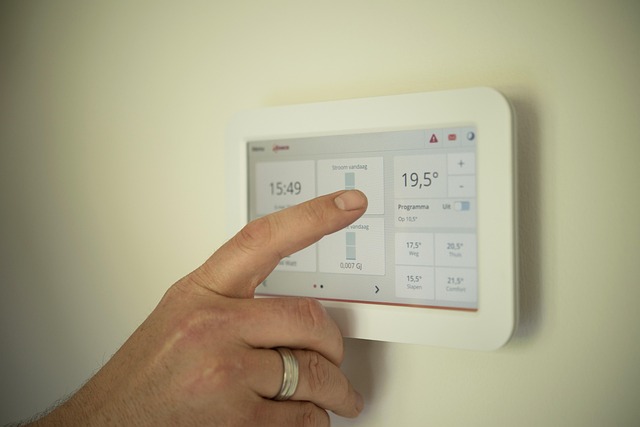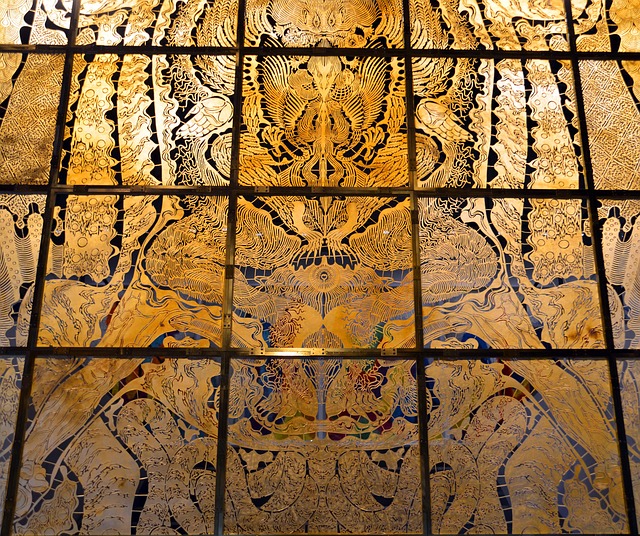Retrofitting old homes with smart thermostats, like Nest or Ecobee, offers remote control via smartphones or voice commands, saving energy and enhancing comfort. DIY installation is possible with intuitive instructions and video tutorials. Compatibility with vintage HVAC systems is key. Proper placement, avoiding drafts and sunlight, and considering insulation are crucial for optimal energy efficiency, benefiting both home and smart grid.
Looking to modernize your old home with a smart thermostat? You’re not alone. Retrofitting your heating and cooling system offers energy savings, comfort, and control. This guide dives into the world of smart thermostats designed for seamless integration with older homes, focusing on compatibility and easy smart thermostat installation. We explore top picks and offer valuable tips to ensure success, avoiding common pitfalls along the way.
- Understanding Smart Thermostats for Retrofit
- Top Picks for Compatible Old Home Systems
- Installation Tips and Common Pitfalls Avoided
Understanding Smart Thermostats for Retrofit

Understanding Smart Thermostats for Retrofit
When it comes to retrofitting old homes, installing a smart thermostat is a game-changer. These advanced devices allow homeowners to control their heating and cooling systems remotely via smartphones or voice commands, offering significant energy savings and increased comfort. Unlike traditional thermostats, best smart thermostats for small spaces are designed with versatility in mind, fitting seamlessly into both modern and retro homes alike through compatible smart thermostat installation.
With a bit of DIY spirit and the right tools, installing a smart thermostat without professional help is achievable. Many models come with intuitive step-by-step guides and video tutorials that make the process straightforward. How to install a smart thermostat involves connecting it to your existing HVAC system and configuring the settings according to your preferences. This not only empowers homeowners but also ensures they can take full advantage of these innovative devices without breaking the bank.
Top Picks for Compatible Old Home Systems

When retrofitting a smart thermostat in an old home, it’s crucial to choose models that seamlessly integrate with existing systems. Top picks for compatible old home systems include Nest Learning Thermostats and Ecobee SmartThermostats. These devices offer excellent compatibility with various heating, cooling, and humidity control mechanisms found in vintage homes, making them ideal for retrofitting without the need for extensive modifications.
A smart thermostat vs. traditional model provides numerous benefits, including energy efficiency, automated temperature control, and remote access via a mobile app. How to install a smart thermostat involves setting up the device according to manufacturer instructions, which typically include pairing it with your home’s existing HVAC system and configuring desired temperature settings. Once installed, these advanced devices learn your family’s habits, adjusting the temperature accordingly to save energy and enhance comfort.
Installation Tips and Common Pitfalls Avoided

When installing a smart thermostat, it’s crucial to understand your home’s unique dynamics. Begin by assessing your heating and cooling systems; ensure compatibility with your existing hardware for seamless smart thermostat installation. Many modern models offer wireless options, making retrofitting easier than ever, especially in older homes.
Avoiding common pitfalls is key to reaping the advantages of upgrading to a smart thermostat. One frequent mistake is overlooking insulation and air sealing—a poorly insulated home can render temperature control ineffective. Additionally, proper placement is essential; mount the thermostat away from direct sunlight or drafts to ensure accurate readings. By considering these factors, you’ll not only optimize your home’s energy efficiency but also enhance the overall smart grid and reduce environmental impact.
Retrofitting your old home with a smart thermostat is an excellent way to modernize your space, save energy, and reduce utility costs. By understanding the compatibility of various models with older systems and implementing careful installation practices, you can enjoy the benefits of advanced temperature control without major disruptions. With the right smart thermostat for your needs, you’ll be well on your way to a more comfortable and efficient home environment.
